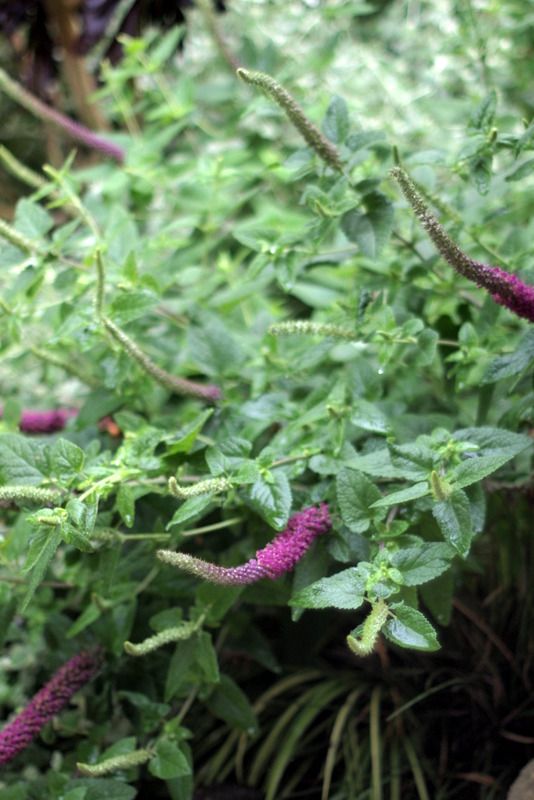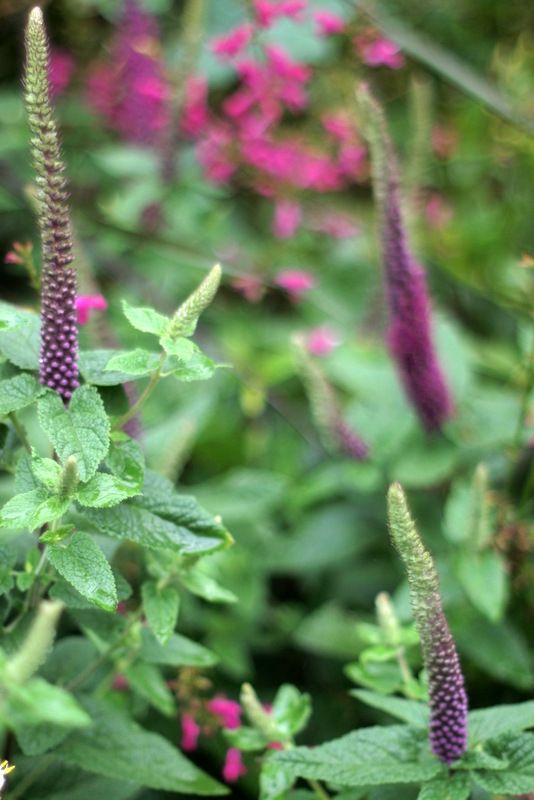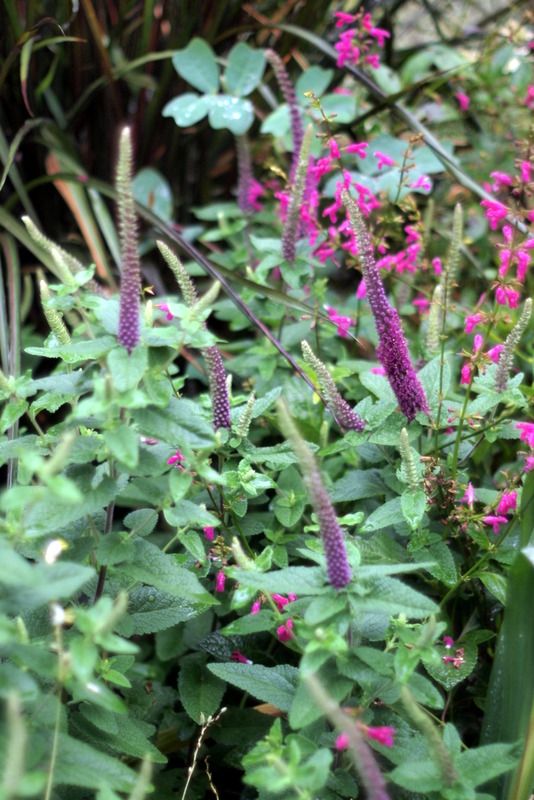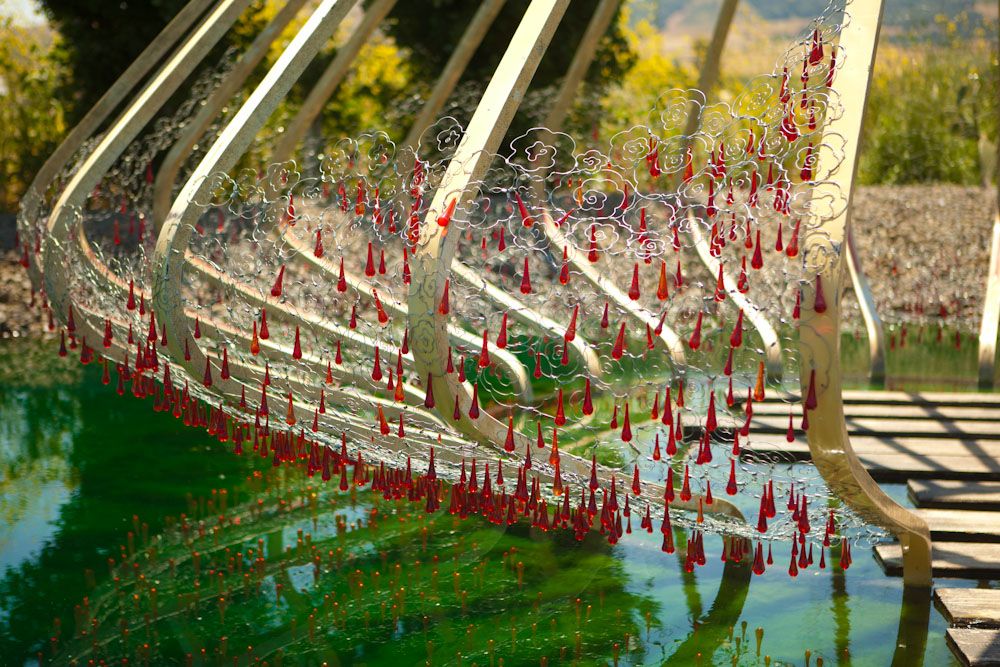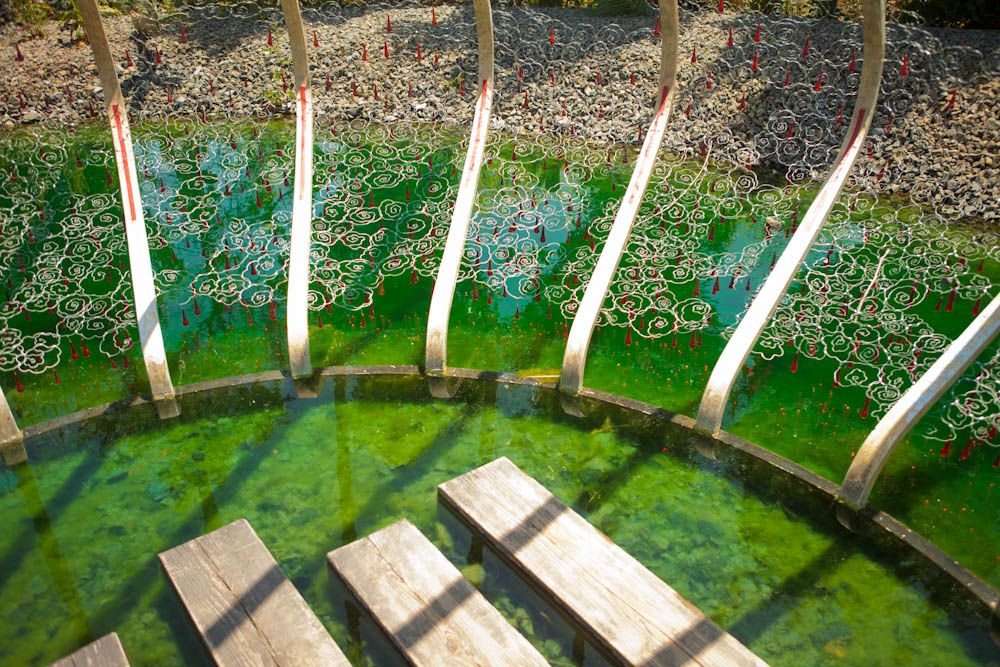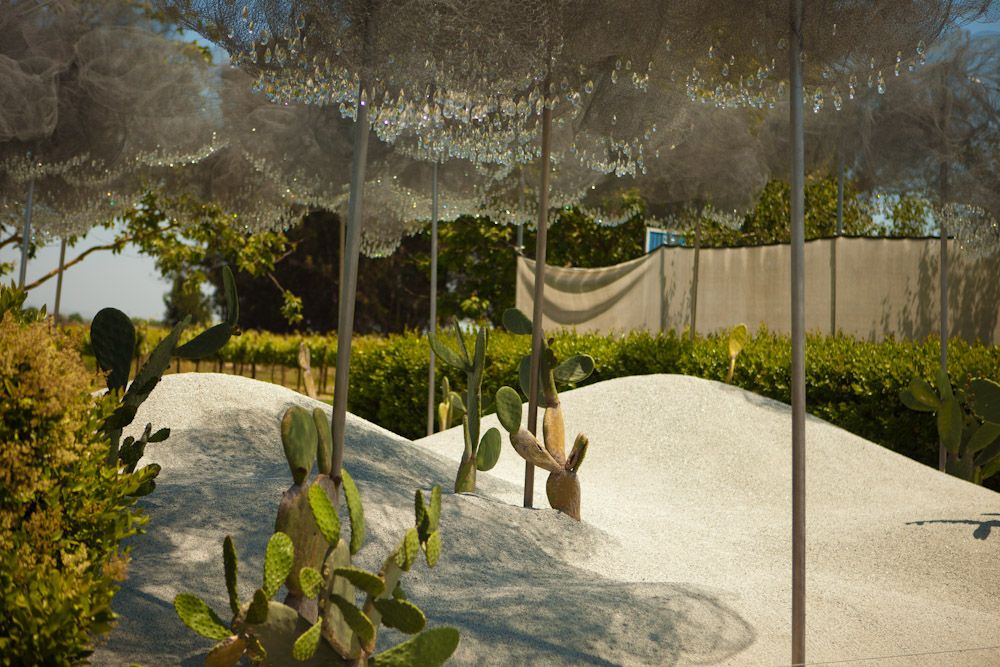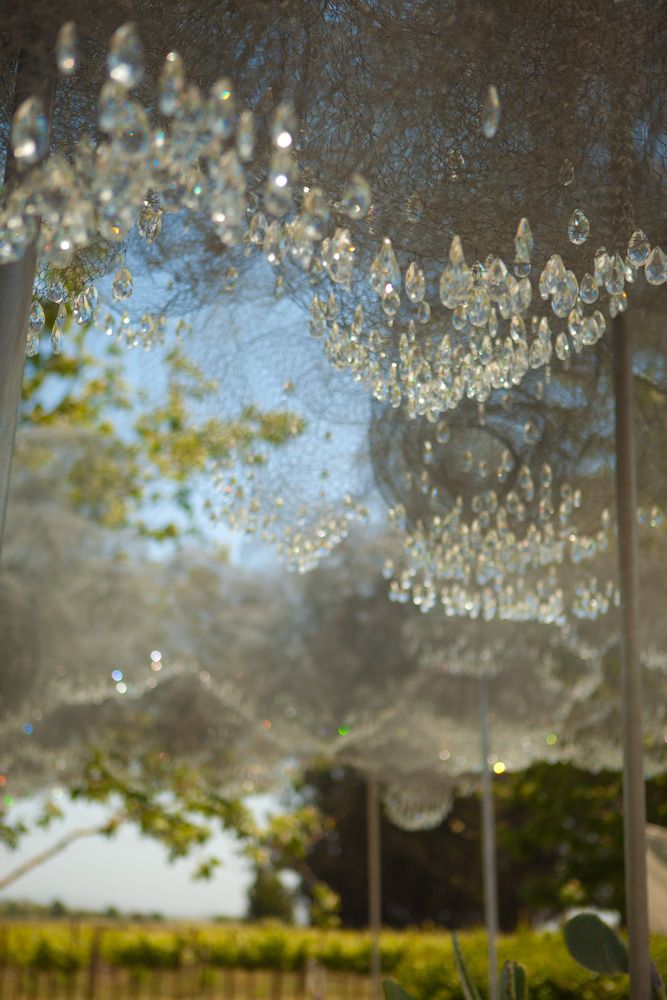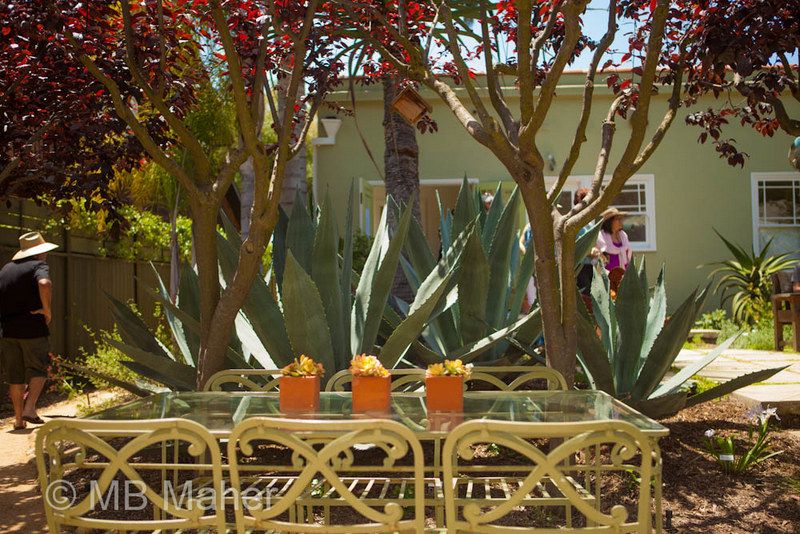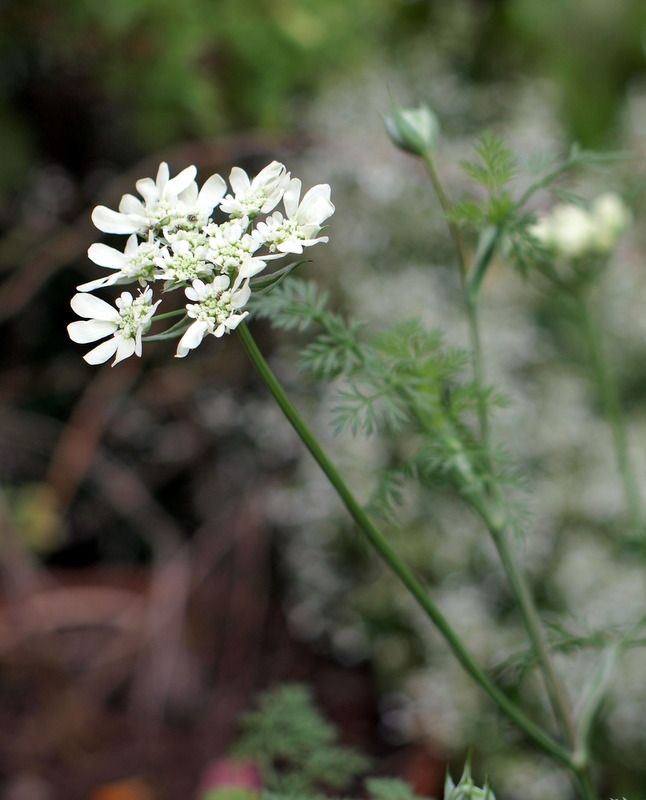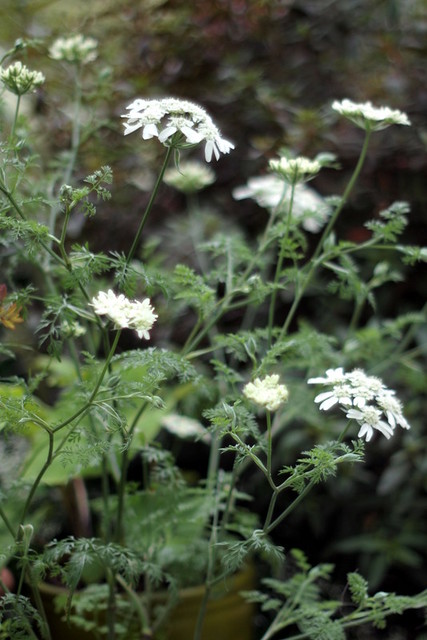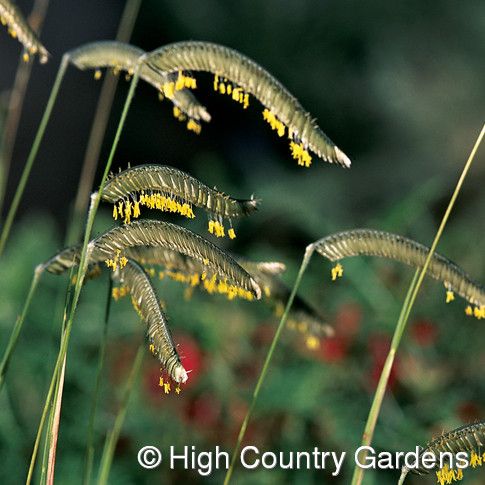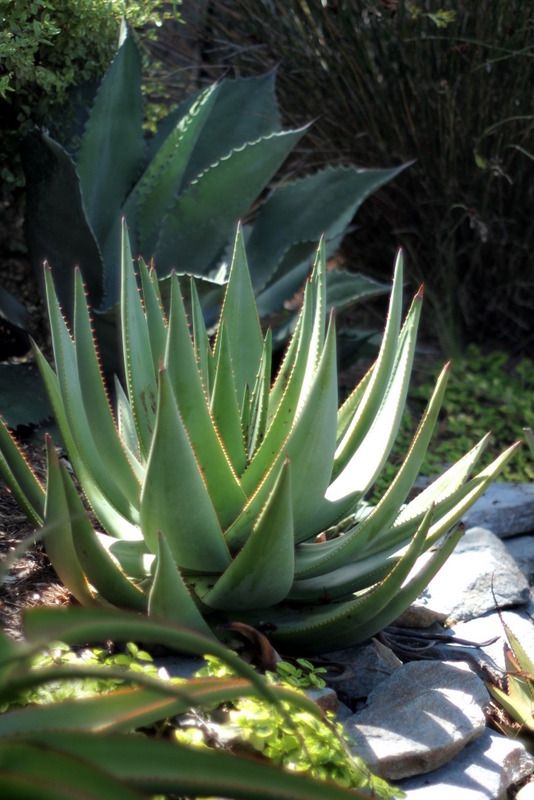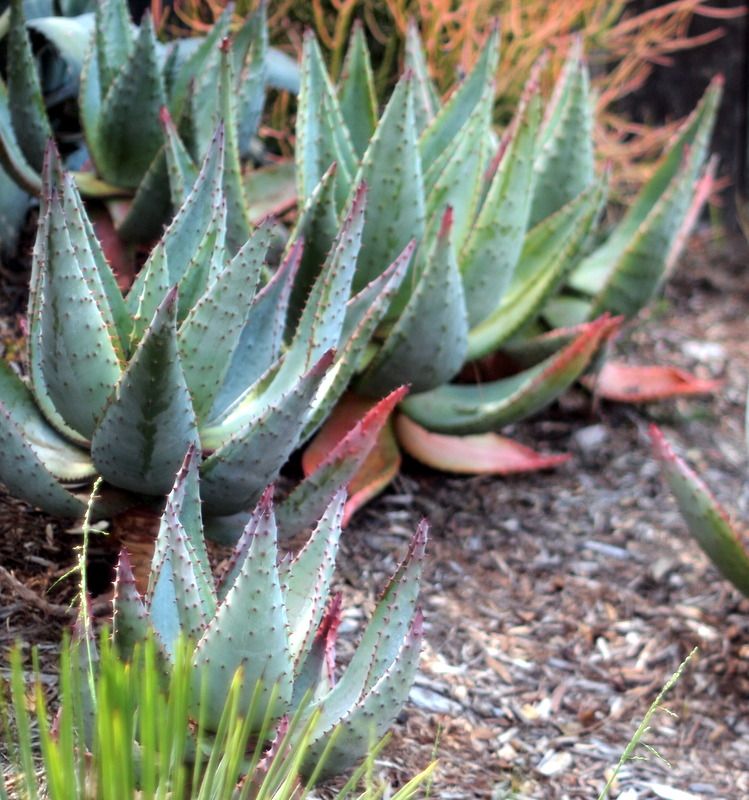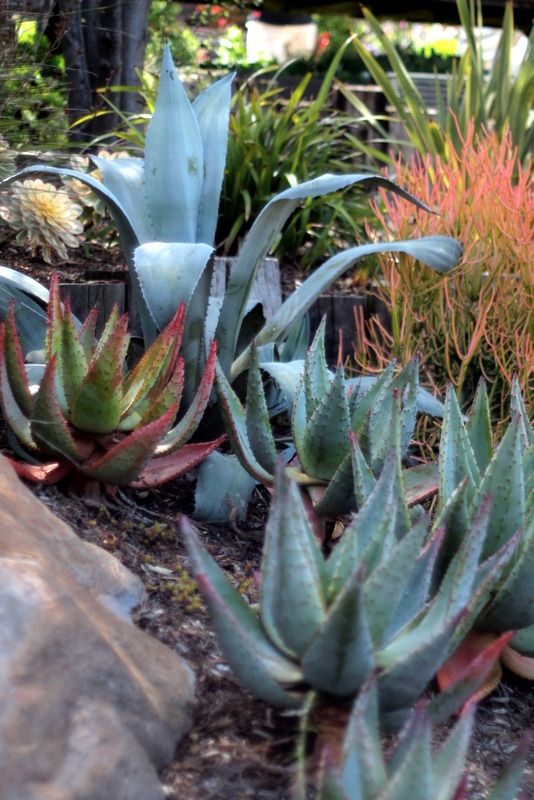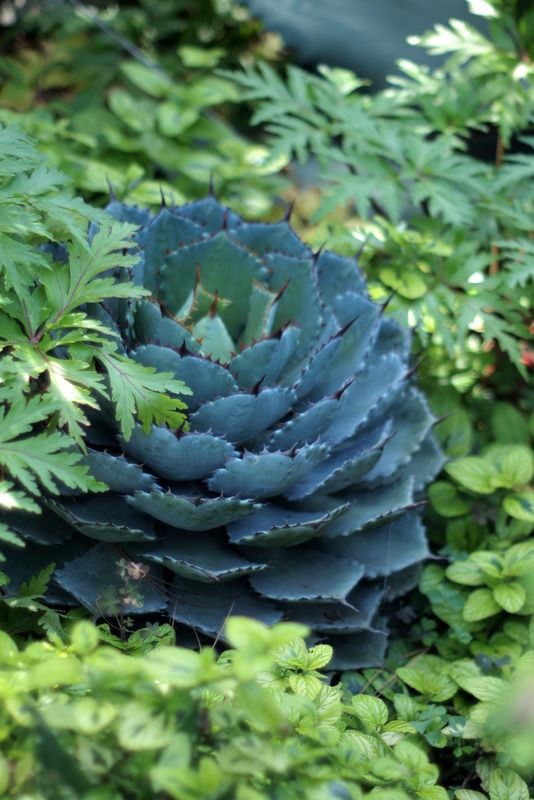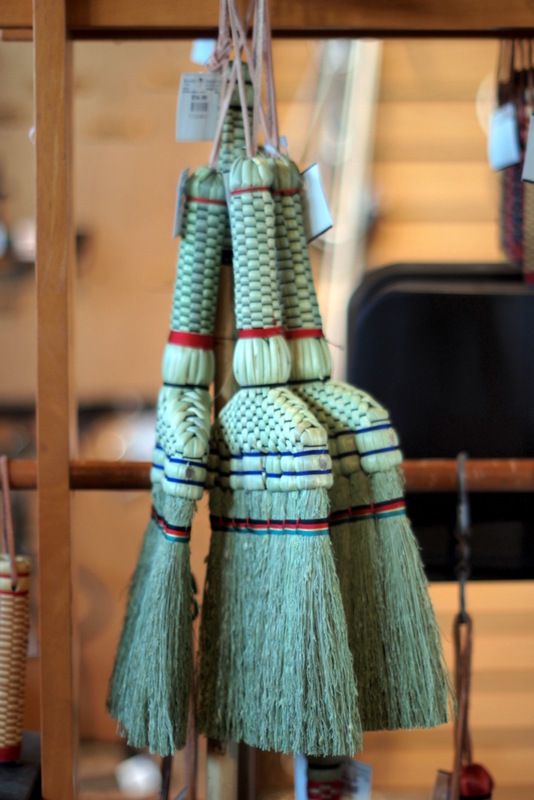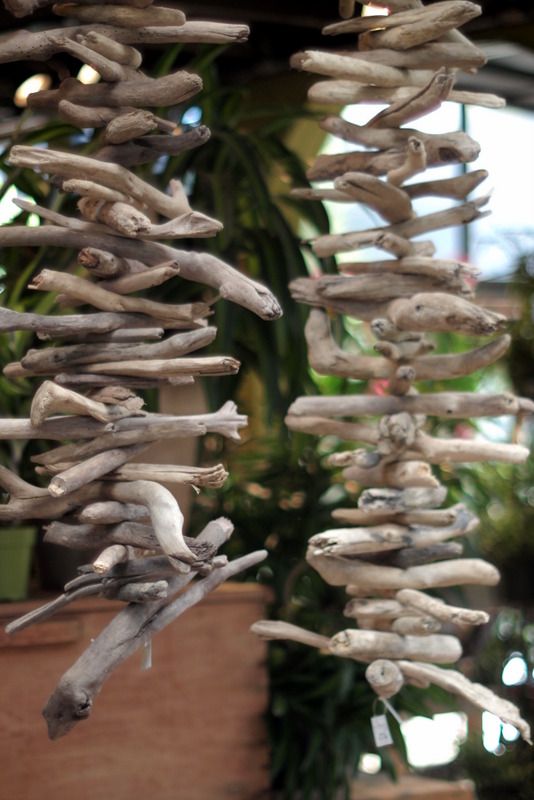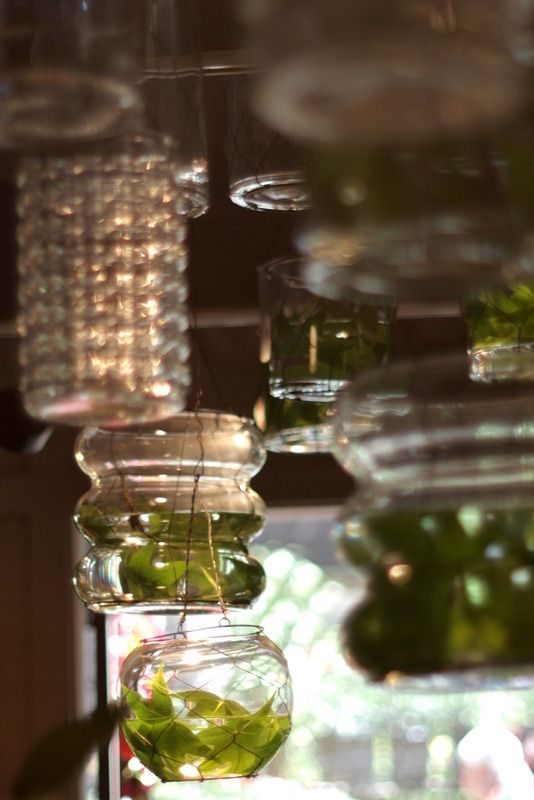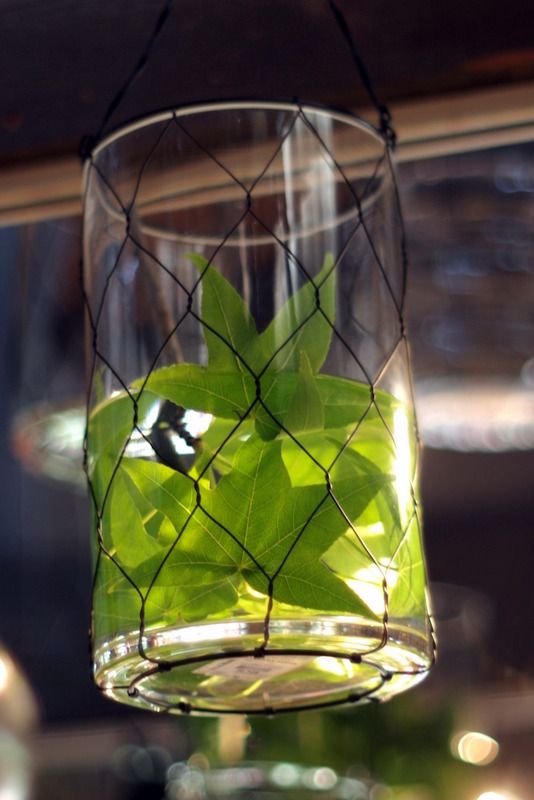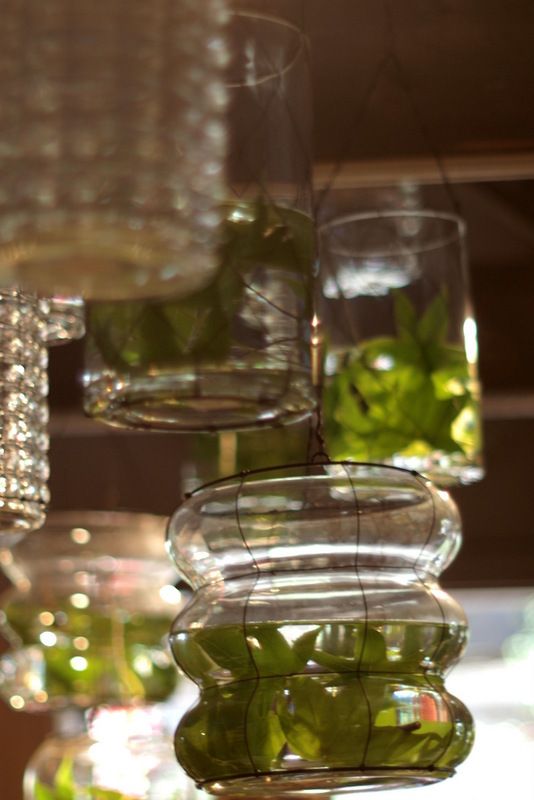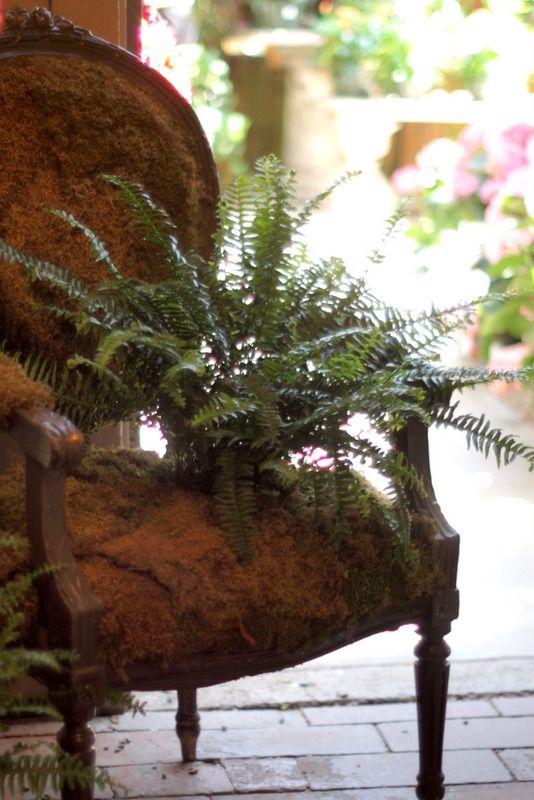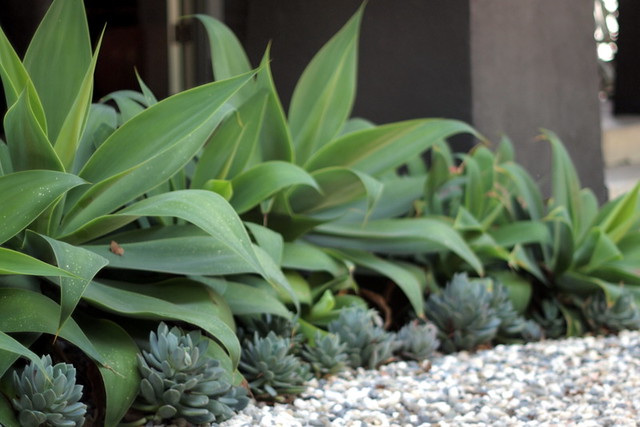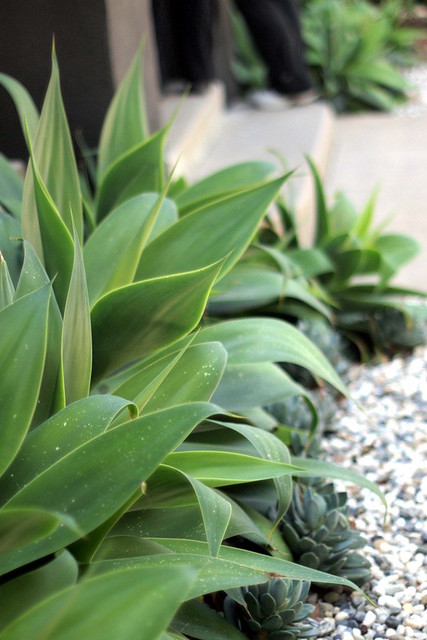Quote of the week: “I can’t believe I burned down a tree older than Jesus,” philosophized a 26-year-old woman who torched a 3,500-year-old bald cypress known as The Senator last January, one of the 10 oldest trees on earth, while smoking a meth pipe in the tree’s hollow trunk. Orlando Sentinel story here.
Update on car jack stand planters written about here in Succulent Experiments. The repurposed window screen may cause the soil to dry out too quickly even for succulents. Growth seems to be in reverse gear rather than forward, so time to try something else. The pale green Crassula expansa never regained that lovely fluffiness. Full disclosure is in order because that post still gets an amazing number of hits. (Almost as many as The Tree Collard. Who knew?)
Artichokes were everywhere on garden tours this year. These chokes were growing in a hell strip devoted solely to artichokes.
(Doesn’t that make it a heaven strip?)
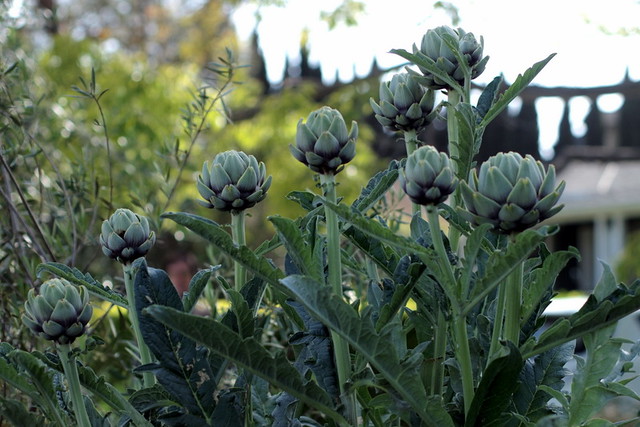
Is it me, or does the subject of gardens and landscapes seem overly weighted down with polemics? Fashion, music, cooking, design — there’s controversy and sustainability subtext in some of these areas as well, and rightly so, but with gardens it seems to get especially overwrought. Be prepared to stand your ground among the welter of categories used like accusations: design-driven, plant-driven, natives, non-natives, edible, ornamental. Granted, with a garden comes responsibility for the health of the soil, creatures, finite resources — but after that’s been reasonably sorted out, I say let it rip. How to describe this approach? Maybe a good analogy to this unapologetically flashy kind of gardening I love is pop music — changeable, not meant to last, absorbing influences from all over the globe, interested in color and rhythm, no purpose other than to get your toe tapping and your eye dancing. Not monumental but fleeting. Riffing on the seasons. Pop gardening? Maybe I just need a break from garden tours for a while.
At home, summer’s jungle quickens. This castor bean plant which lives over frost-free year to frost-free year is already a small tree in May, about 8 feet high. With the trunk growing thick and woody, this will be its last summer then I’ll start over with some of the progeny that sprout around its base. The deep color of the castor bean seedlings has been true to its namesake ‘New Zealand Purple.’ Barely room enough for two in the back garden.
I love to see it with the amber grass Stipa arundinacea* More thinning on the to-do list this weekend. Tender Salvia wagneriana is an iffy bloomer, very sensitive to temperature and day length, and hasn’t had more than a dozen blooms at any time. Its saving grace up to now is its ability to throw sporadic blooms throughout a zone 10 winter, but that hardly earns it space for summer. Its fate will be decided this weekend. In fact, looking at these photos has me convinced it’s gotta go. (A few hours later, and Salvia wagneriana is gone, destined for compost, its absence barely causing a ripple in the jungle. A few nicotianas from the seeds Nan Ondra shared last winter, ‘Ondra’s Brown Mix,’ will be a much better fit here.) Another nicotiana, N. mutabilis, lived over the winter and is sending up bloom trusses to the left of the stipa/New Zealand Wind Grass. (Edited to explain that description was left even though photos are inexplicably no longer available.)
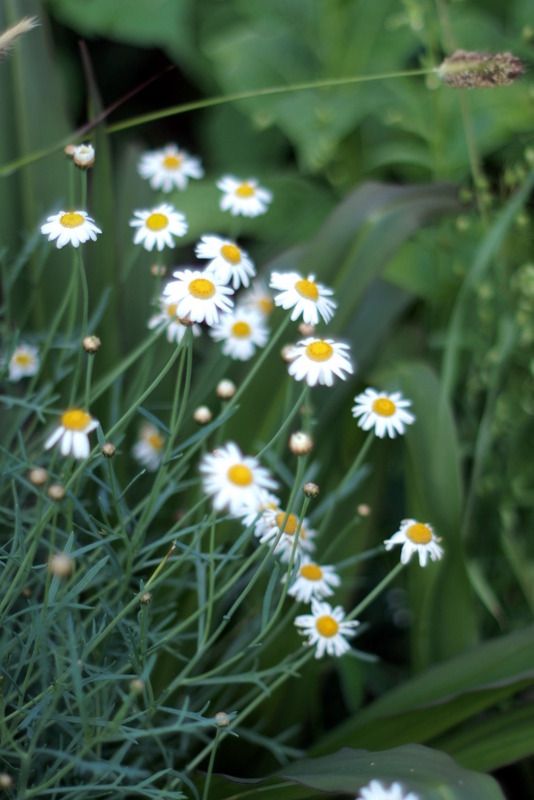
Strappy leaves are eucomis, and the little daisy is Argyranthemum haouarytheum.
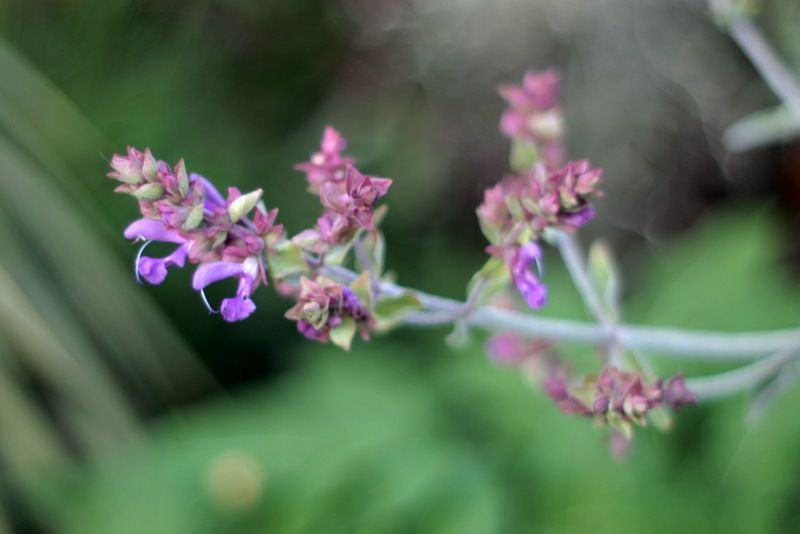
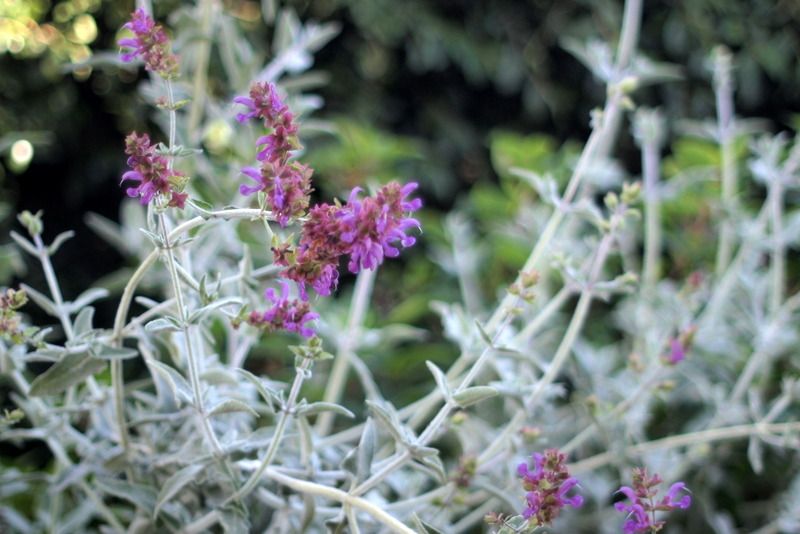
Salvia canariensis was very nearly pulled out a few weeks ago for its sprawling, ungainly ways, but I’ve always had a soft spot for this huge salvia.
As an interim solution, lower branches have been thinned out, with lots more taken out today, pruning it into a vase-like shape as for a buddleia.
In a couple weeks it will lose that surprised “What a bad haircut I got” look. This is generally a short-lived shrub. Always grow it dry and lean.
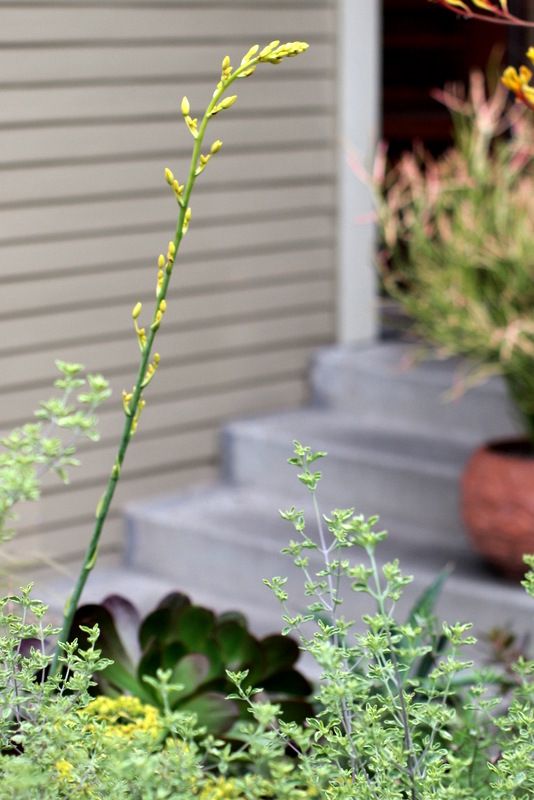
The pale yellow hesperaloe is blooming this year, kind of a photographic moot point against all those golden kangaroo paws.
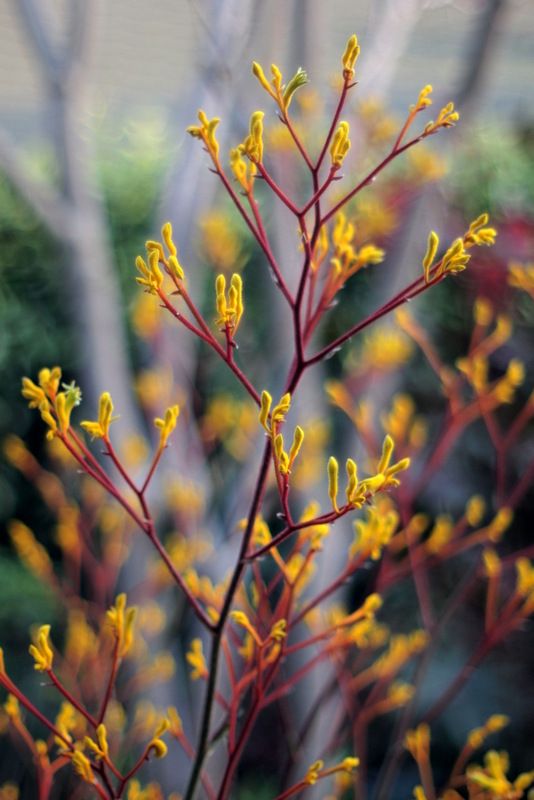
Longest-lasting bulb for pots has been Ornithogalum dubium, in bloom on the front porch over a month. More, please, for next year.
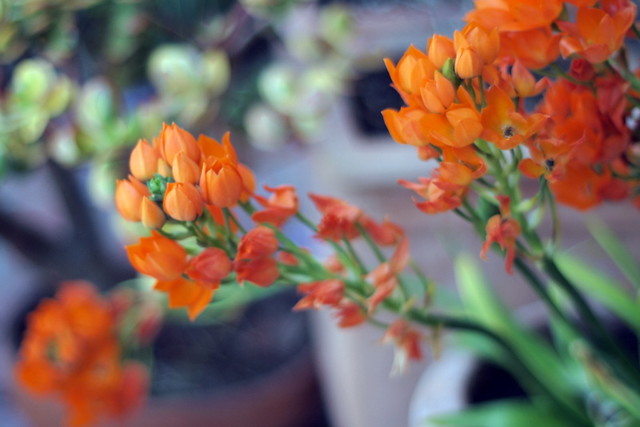
An easy nasturium species for summer containers, Tropolaeolum peregrinum, the Canary Creeper.
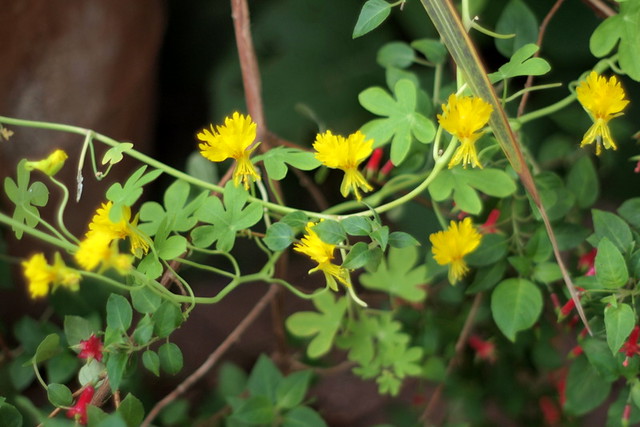
I know, I know, what a lot of plants. You’d think I just moved out of an apartment and finally got my own garden. But that happened over 20 years ago, and I’ve been gardening this way ever since.
*This grass is now known as Anemanthele lessoniana, but I’m just slow to adapt to the new name
